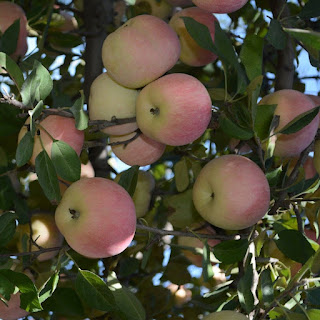Swiss Cheese Plant
Swiss Cheese Plant a Species of Monsteras
- Cariman
- Tarovine
- Phlodendrone
- Salad plant
Botanical Name:
Monstera deliciosa
Name Story:
Fruit salad plant:
This plant not only has unique and beautiful leaves but it also has peculiar fruits that look like green hexagonal scales on the outer layer of maize. When these scales fall off, they emit a strong and sweet fruit aroma. Furthermore, its fruit tastes like fruit salad. Moreover, the word deliciosa also means delicious. So, it's called a fruit salad plant.
Swiss cheese plant:
This plant has always been loved for its unique leaves. During the seedling stage, its leaves are intact as a whole. However, as it ages, the leaves begin to pop out holes and lobes. The older it gets, the larger the holes and the larger the leaves are. This makes its leaves very similar looking to the holes in cheese, so it will be called Swiss cheese plant.
Scientific classification:
Genus:
Monstera - Monsteras
Family:
Araceae - Arum, Aroids
Order:
Alismatales - Water plantains and allies
Class:
Liliopsida - Monocotyledons, Monocots
Phylum:
Tracheophyta - Vascular plants, Seed plants, Ferns, Tracheophytes
Characteristics:
Plant Type: Herb
Lifespan: Perennial
Bloom Time: Spring, summer
Plant Height: 10 to 66 feet
Spread: 20 feet
Flower Size: 6 to 12 inches
Habitat: Forests
Flower Color: White, Cream
Leaf Color: Green, White
Fruit Color: Green, Cream, Yellow, Gold, White, Tan
Stem Color: Green
Informations:
The swiss cheese plant produces bright, glossy leaves and makes a popular house plant.
It is originally native to tropical forest regions in Central America.
The nickname swiss cheese plant refers to the small holes that develop in the plant's leaves.
The long fruits resemble corncobs and smell sweet and fragrant when ripe.
Is swiss cheese plant poisonous?
Swiss cheese plant has low severity toxicity to humans. It can cause contact dermatitis from contact with the sap of the plant, leading to skin irritation, redness, itchiness, mild pain, and inflammation. Ingestion of large quantities of any part other than the fruit of this plant may cause toxic reaction, due to the presence of calcium oxalate crystals and other potential toxins. Symptoms of poisoning from eating the plant may include a burning sensation in the mouth, tongue, and throat, nausea, vomiting, difficulty swallowing, excessive salivation and drooling, and diarrhea. Poisoning is most likely to occur from accidental contact with the sap. It is commonly grown as a houseplant and might also be encountered in forests in tropical areas.
Is the swiss cheese plant harmful to dogs?
The sap within the swiss cheese plant contains toxins that are poisonous to dogs and cats.
Tips from Garden Coaches:
Recognized by its large dark leaves with holes, swiss cheese plant is an eye-catching houseplant. As long as it has sunlight and regular watering, it will be happy.
Interesting Facts:
Its leaves are evergreen and extremely shade-tolerant. It is a famous indoor foliage plant. It is commonly used as potted ornamentals in Europe, America and Japan to decorate living rooms and windowsills.
Conditions Requirement:
Difficulty Rating:
Swiss cheese plant is super easy to take care of, with resistance to almost all pests and diseases. It is a perfect option for gardeners with brown thumbs.
Sunlight:
Partial sun, Full shade, Full sun
Hardiness: 30 ℉
Hardiness Zones: 10 to 11
Soil: Chalky, loam, clay, sand; well drained; slightly acidic, neutral, slightly alkaline
Care Guide:
Water:
It is important to avoid overwatering the swiss cheese plant because it is succeptible to root rot. The plant should be watered after the top few inches of potting soil have been allowed to dry out from the previous watering. This species will grow well if it is watered in a well-drained pot.
Fertilization:
Fertilization once in spring.
Pruning:
Trim the dead, diseased, overgrown branches in winter.
Planting Time:
Spring, summer, autumn
Harvest Time:
Autumn, Winter
Propagation:
Division, Cutting
Potting Suggestions:
Needs excellent drainage in pots.
Pests and Diseases:
Bacterial infection; glasshouse red spider mite, thrips, mealybugs, scale insects
Uses
Environmental Protection Value:
It can improve indoor air quality and absorb carbon dioxide at night.




Comments
Post a Comment